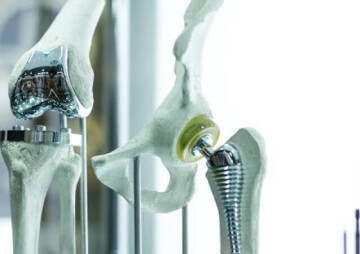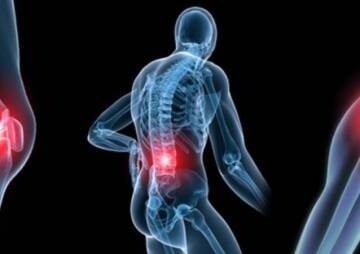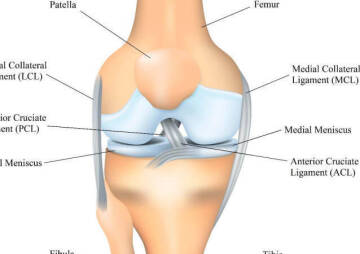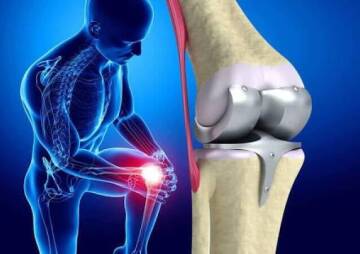-
Category
Craniomaxillofacial Surgery
Orthopedic Surgery
Spine Surgery
Orthopedic Implants
Hip Surgery
Knee Surgery
Pectus Excavatum
Bone Graft
Disinfectants
Healthcare
All you need to know about Inner Knee Pain

Inner knee pain is accompanied by various symptoms that distinguish it from other knee pains. You will find all of these and even ways to prevent and treat medial knee pain in this article.
Any pain in different parts of your body disrupts your daily activities. Inner knee pain is a common problem that affects approximately 19% of the population. The knee is one of the most complex and important joints in your body, so being prone to injuries is normal. When it comes to inner knee pain or medial knee pain, it means pain in the inner knee area closest to your opposite knee. Many reasons can trigger this problem at any age, regardless of gender. This pain is accompanied by various symptoms that distinguish it from other knee pains. Do you want to know what these symptoms are and what causes them? You will find all of these and even ways to prevent and treat medial knee pain in this article.
What Does Inner knee Pain Mean?
It may be important for you to know what parts of the knee are most affected by medial knee pain. So to make this clear, you first need to know where the medial side of the knee is. The medial sides of your knee point to your left knee's right side and the left side of your right knee to the middle of your body. So you will feel pain in these areas, which will usually affect your daily activities. To better understand, it is better to have an overview of the anatomy of the knee's inner parts.

- The Quadriceps tendon connects the Quadriceps muscles to the kneecap
- Medial collateral ligament (MCL)
- The medial meniscus is thick, elastic bands of cartilage in the shape of a crescent attached to the tibia.
- A plica is a fold in the thin tissue that forms the joint of your knee.
- Between your bones and tendons, the bursa operates as a cushion and decreases friction.
These areas are among the most susceptible and vulnerable areas where inner knee pain is typically caused by damage or complications in one of these areas. Accidents, sometimes a bit of carelessness and a wrong lifestyle, can easily damage your knee health. Who do you think is most likely to experience medial knee pain?
Who are prone to inner knee pain?
Everyone may feel pain in their knees throughout their lifetime and at various ages. In some people, it is temporary and disappears after a while; in others, it becomes a lifelong problem. Athletes, adults over the age of 60 are in the high-risk group, while young people and children are in the low-risk group in terms of sensitivity to injuries. In general, the following people are more likely to experience inner knee pain:
- Footballers, skiers, rugby players. According to estimates, knee pain in former footballers was 52.2%, compared to 26.9% in the general population. (Reliable source)1
- People who suddenly increase their physical activity
- Cyclists or breaststroke swimmer. because these people use their knees too much
- Older people due to osteoporosis or falls
But don't forget that anyone, from young to old, may suffer this condition, so you should take care of your health.
Causes of Medial Knee Pain
Various factors cause Medial knee pain that varies from person to person. But sports injuries, falls, and sudden increase in knee activity are common causes of pain. In children, the causes of medial knee pain may be different from those in adults. For example, patellar tendonitis, patellar subluxation, and Osgood-Schlatter disease are the most common causes of this pain in children. Besides, the leading causes of medial inside knee pain are related to anatomical damage to the inside of the knee, some of which are described below.
1. Medial Collateral Ligament (MCL) Injur

This injury is usually recognized as the most important cause of medial knee pain. First of all, it is better to know what "Medial Collateral Ligament (MCL)" is. The MCL is one of the most significant ligaments in your knee that ties your shinbone to your thighbone. This ligament keeps your knee stable and controls your knees' sideways movements. Stretching or tearing this ligament is one of the main causes of inner knee pain that athletes, particularly rugby players, often experience more. It causes injury to the MCL when a blow pushes the knee inward into the opposite knee. Also, various factors such as twisting the knee while skiing or falling can damage this ligament.
Symptoms of MCL Injury
Depending on the severity of your injury, you may experience mild or severe pain inside your knee. If the blow is severe, you may not be able to walk or even touch the affected area. According to the experience of injured people, you may hear a popping sound during the impact, and the area swells, which is not the same in different people. Knee locking and medial knee pain with flexion are other common symptoms of Medial Collateral Ligament (MCL) Injury.
Possible Treatments: knee Brace, PRICE (protection, rest, ice, compression, and elevation)
2. Medial Meniscus Tear

What is Meniscus? The meniscus is a C-shaped fibrocartilagenous structure that acts as a shock-absorbing structure between your thigh bone (femur) and your shin bone (tibia). There are two menisci cartilages in each knee(one meniscus on each side), and its rupture is one of the common causes of medial knee pain. Knee rotation and pressure can cause this injury, especially during sports activities such as football and basketball. This torn isn't just for athletes, and older people may experience it under the influence of mild blows.
Symptoms of Medial Meniscus Tear
The interesting thing about meniscus tear is that you may hear a pop and continue walking without any pain. But what about the day after the accident? You will most likely wake up with pain and swelling, and the pain will gradually get worse. Other symptoms include:
- Stiffness
- Catching or locking
- Sense of imbalance
- Sharp pain in your inside of the knee
Possible Treatments: Surgery, Exercise, and PRICE
3. Osteoarthritis (OA)
Suppose you experience pain inside your knee without swelling while sitting, walking, or climbing up and downstairs. In that case, you are more likely to have osteoarthritis. It is a degenerative disease that usually causes cartilage loss between joints in people over 50 years old. As a result, you may have difficulty moving your knee and may get stiff when you first get up for less than 30 minutes in the morning. Older people, women, obese people, gardeners, or runners are at high risk for osteoarthritis.
Possible Treatments: medication, acupuncture, injections and knee braces
4. Bursitis
Bursae are thin tissue sacs that contain a small amount of slippery fluid. Bursa allows the tissues to move easily on both sides of the sacs. The bursa between the MCL and the three tendons in the knee is collectively referred to as the 'Pes Anserinus.' Sometimes various causes such as osteoarthritis, obesity, and medial meniscus tear cause excessive secretion of fluids and inflammation of the bursae, which is called bursitis.
Symptoms of knee bursitis
- Pain around 2 to 3 inches below the knee joint
- Redness
- Difficulty walking
- Swelling
- it is painful to lie on your hip
- thickening of your bursae
Possible Treatments: corticosteroid injections, strengthening exercises, rest, and ice
5. Rheumatoid arthritis (RA)
This condition is an autoimmune disease that causes inflammation of the joints and usually causes inner knee pain. Arthritis affects different areas of the body, but the elbow and knee joints are most affected. Severe pain and tightness inside the knee in the morning are symptoms of arthritis that decrease during the day.
6. Medial Plica Syndrome

Sometimes part of the synovial membrane folds into the joint space, forming a synovial fold. This fold, also called the plica, is located inside the knee and is very effective in stabilizing the knee joint. Excessive use of the knee in activities such as running, cycling, or going up and downstairs can cause friction, irritation, and inflammation of the plica.
Symptoms of Medial Plica Syndrome
- Hearing a clicking sound when bending the knee
- painful rather than sharp or feverish
- trouble sitting for a long time
- Severe pain when going up and downstairs
- catching or clicking knee when you bend your leg
Possible Treatments: anti-inflammatories such as Celecoxib and Diclofenac
All of these factors are significant causes of medial knee pain and related symptoms. There are many other factors involved in this problem that orthopedic surgeons are looking for. Keeping your knee healthy should be very important to you because minor injuries can have a significant impact on your life. If you have one or more of the above symptoms, do not treat it arbitrarily, and be sure to see your doctor. You may be wondering when the best time to see a doctor for the treatment of inner knee pain is?
When should you go to the doctor?
Knee injuries are prevalent, and you do not need to see a doctor immediately after an accident. Try not to bend your leg, don't put pressure on it, and use an ice pack to reduce swelling. Rest for three days and do the following:
- Cover area with an elastic compression bandage
- Try walking with crutches for three days
- Ice the affected area three or four times a day for twenty minutes
- Do not bend your legs while sitting, and do not climb stairs
- Keep your knee slightly higher than your body when you sleep
- Take anti-inflammatory medications, such as Ibuprofen or Naproxen
However, if your pain does not decrease after three days and you have one or more of the following conditions, see your doctor.
- Severe pain and numbness in the legs even when there is no weight on it
- Swelling, redness, and deformity of the affected area
- Fever and bluish discoloration in your calf
- clicks or locks in your leg
Medial Knee Pain Treatment
Treatment varies depending on the doctor's diagnosis and the type of complication. An orthopedist may ask for an X-ray or MRI scan to accurately diagnose the cause of the pain. But these are not always necessary and, based on your examination and medical history, the doctor can prescribe the best treatments for you. While some patients think the treatment is just surgery, knee surgery is a last resort after medication and proper exercise. In addition to specific medications, the following exercises are also very effective in treating pain, which must be done under a physiotherapist's supervision:
- Quad Stretch
- Hamstring Stretch
- Half Squats
- Heel and calf stretch
- Calf raises
- Hamstring curl
- Straight leg raises
- Swimming
- Yoga
- Stationary cycling
To Sum Up
Medial Knee pain is a common discomfort caused by short-term or long-term problems. Although it is not always possible to prevent injuries, you can take some conservative and straightforward steps to prevent these types of damages. Strengthening exercise, weight loss and a balanced diet, massage, aromatherapy, and strengthening the leg muscles are examples of simple measures to prevent knee injuries.
The causes of pain are various, and the diagnosis may require expertise and experience. Diagnosis and treatment are different for each patient, so the effect of a medication may vary from person to person. Even exercise varies with the type of injury in patients because they all have their physiology and anatomy. In this article, you have read everything you need to know about medial knee pain and its causes and symptoms. You can also get brief information about treatments. But the main challenge is to introduce little-known home and traditional remedies. Treatments that are very popular today and are used instead of chemical medications. How many of these methods do you know or even use? Which home remedy has the most excellent effect on reducing pain or treating injury? If you have suitable treatment methods, write below so we can help medical science and even patients.






